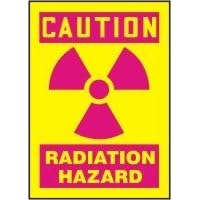Maybe Sentience isn’t as rare as it once was made out to be…
Posted in Education, Environment, Science on January 14th, 2010 Many years ago, when I was a young’un, the list of criteria for being sentient was quite short and only humans qualified. Over the years, the criteria for sentience has subtly and quietly changed as more and more animals were found to qualify. For example, some animals were found to use tools, so tool using was dropped from the list.
Many years ago, when I was a young’un, the list of criteria for being sentient was quite short and only humans qualified. Over the years, the criteria for sentience has subtly and quietly changed as more and more animals were found to qualify. For example, some animals were found to use tools, so tool using was dropped from the list.
Star Trek: The New Generation did an episode where Data was to be returned for disassembly by an AI researcher. Picard defended Data in court to prove his sentience and rescind the order. The full text of the scene is available online.
PICARD: What is required for sentience?
MADDOX: Intelligence, self awareness, consciousness.
Picard manages to create enough of a case and create enough doubt that the judge had to find for Data. It seems to me there was a similar episode during the original Star Trek series but I’m not sure. (If anyone knows for sure let me know which episode and basic case.)
From Ask The Van: in response to question on AI sentience:
When it comes to animals, there are a number of things which scientists try to measure – here are a few examples:
(1) The ability to observe and respond to one’s environment. This requires sensory perceptions and the ability to react to those perceptions. This is a pretty basic property of life, although the extent to which various creatures can do it varies widely. Most (all?) AIs already possess this ability.
(2) Intelligence. *”The ability to learn and understand, the ability to cope with a new situation” Many animals, including primates, pigs, and dolphins, have been shown to have very high intelligence. Some AI’s have also been shown to possess a high level of intelligence.
(3) Sentience / Consciousness. To be *”able to feel and think”. This is a tricky one. There is some very strong evidence out there indicating that certain species of animals are capable of both emotion and rational thought, but the argument hasn’t yet reached final resolution.
(4) Self-awareness. In the animal debate (and also the AI debate, I suspect), this is a big deal. Does the animal have awareness of itself? There are a zillion different experiments out there to test this, and they all seem to rely on a different idea of what proves self-awareness. For example, some definitions require that an animal understand how its own movements affect the image in a mirror. Some depend on an animal’s ability to lie. Some even rely on the fact that carnivorous animals don’t try to eat their own flesh. In the end, this is still a very nebulous issue, and the answers aren’t clear.
As you see from the above response, animals have been found to achieve many of these criteria. I’ve never managed to get over my feeling that we, humans, are so full of ourselves and our place at the center of the universe that we’ve ignored the possibility that we may share this world with a number of other intelligent/sentient species. In doing some research for this article, I ran across the following quote from Jeremy Bentham (1748-1832) from Introduction to the Principles of Morals and Legislation.
“Other animals, which, on account of their interests having been neglected by the insensibility of the ancient jurists, stand degraded into the class of things. … The day has been, I grieve it to say in many places it is not yet past, in which the greater part of the species, under the denomination of slaves, have been treated … upon the same footing as … animals are still. The day may come, when the rest of the animal creation may acquire those rights which never could have been withholden from them but by the hand of tyranny. The French have already discovered that the blackness of skin is no reason why a human being should be abandoned without redress to the caprice of a tormentor. It may come one day to be recognized, that the number of legs, the villosity of the skin, or the termination of the os sacrum, are reasons equally insufficient for abandoning a sensitive being to the same fate. What else is it that should trace the insuperable line? Is it the faculty of reason, or perhaps, the faculty for discourse?…the question is not, Can they reason? nor, Can they talk? but, Can they suffer? Why should the law refuse its protection to any sensitive being?… The time will come when humanity will extend its mantle over everything which breathes…”
Jeremy Bentham (1748 – 1832)
Introduction to the Principles of Morals and Legislation (1789)
The quote was used in an article on Ethics and discussed our anthropocentric view of sentience.
I believe that I’d got way beyond this author’s views. I believe we are still very anthropocentric. In fact, as strict as we tune the criteria for sentience to always keep mankind on the top of the stack as the only sentient species on Earth — we have many people, humans, who don’t feel that other humans, because of skin color, sexual preference, perceived intelligence or whatever, are really sentient or, in fact, human. Whenever humans from whatever government start a war the first thing that is done is the dehumanizing of the enemy. Evidently it is much easier to kill if you don’t believe the enemy is actually “one of us”.
So, the other day when I came across this article on PhysOrg.com, “Scientists say dolphins should be treated as non-human persons” (January 6, 2010 by Lin Edwards), my first reaction was, “it’s about time.” The article abstract states:
Scientists studying dolphin behavior have suggested they could be the most intelligent creatures on Earth after humans, saying the size of their brains in relation to body size is larger than that of our closest relatives, the chimpanzees, and their behaviors suggest complex intelligence. One scientist said they should therefore be treated as “non-human persons” and granted rights as individuals.
More than about time, but since people don’t consider all people as having rights as individuals, I doubt that this will get very far. But it is a step in the right direction. As we move out into space, we need to recognize that if we were to find intelligent, sentient life out there somewhere, it won’t necessarily look like us. If we can’t accept the possibility of intelligent/sentient life other then homo sapiens on this planet, I don’t hold out much hope for a first contact situation going very well if we should find life on other planets. The odds of this happening are increasing as current research shows that the possibility that we’ve found that life once existed on Mars is increasing as more research is done on available samples.
So, while I think it’s time that we re-examine our relationship with the species that we share our planet with, I doubt very much that humanity is willing to accept the possibility of animal sentience, let alone plant intelligence, when so many can’t accept that all humans are sentient.
Never the less, I’m leaving you with the introductory song to the motion picture, The Hitchhiker’s Guide to the Galaxy”. Besides being a great riff on humanities blindness to other intelligences, it’s a wonderful piece. Enjoy.
Feedback on this article is welcome but unless it is more than — great article or nice blog — it won’t be approved in the comments.


 We have an entire loft in the shed taken up with electronic this-n-that’s that we haven’t gotten rid of because we don’t know where to take it. I know they are toxic and dangerous to just dump and our recycle center doesn’t take any of it — so it sits in storage and moves when we do.
We have an entire loft in the shed taken up with electronic this-n-that’s that we haven’t gotten rid of because we don’t know where to take it. I know they are toxic and dangerous to just dump and our recycle center doesn’t take any of it — so it sits in storage and moves when we do. I’ve been rushing to finish up the second sock that I’ve been knitting. Well, actually I want to finish up a number of projects that have just a bit left to go because I want to start several new ones. So, I thought I’ll finish this sock then the sweater, then the next three things and then start the new stuff.
I’ve been rushing to finish up the second sock that I’ve been knitting. Well, actually I want to finish up a number of projects that have just a bit left to go because I want to start several new ones. So, I thought I’ll finish this sock then the sweater, then the next three things and then start the new stuff.